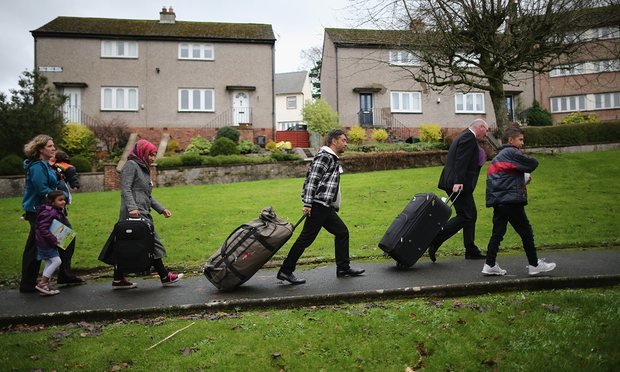A Scottish council is recruiting its first ever Arabic language teacher after Syrian refugees settled on an island.
Argyll and Bute Council is looking for a teacher of Arabic to be based at Rothesay Academy on the isle of Bute.
The aim is not only to preserve the culture of the young refugees but present “an opportunity” for all pupils at the school to learn a global language.
The first families arrived on Bute from war-torn Syria in 2015 and one of the concerns of Syrian parents was that while adults were struggling to learn English, children were becoming fluent very quickly.
Previous reports before councillors said that this had created a concern for parents to maintain the children’s Arabic for their cultural identity and the ability to keep in touch with family and friends from home.
Council officers previously told local politicians that they were considering the best way to support the families with the issue.
Now the council is advertising for an Arabic teacher to be based at Rothesay for 17.5 hours a week. The initial plan is for a temporary post, with a salary ranging from £22,866 to £36,480 per annum.
The closing date for applications is Wednesday, June 20.
A council spokesman said: “We can confirm that we’re recruiting for a teacher of Arabic at Rothesay Academy.
“Our families brought with them the opportunity for people to hear and learn one of the world’s most widely-used languages, and we’re keen to turn this into an opportunity for our pupils.
“The focus is on equipping our young people with skills that will help them succeed in an increasingly globalised world.”
A total of 24 families have been rehomed on the island since December 2015.
Argyll and Bute Council was one of the first Scottish local authorities to respond to the humanitarian crisis in Syria.
A report to councillors at the end of last year said there were now 70 Syrians living on Bute, with more births due.
The island of Bute has a total population of about 6,500.
An update report for councillors, prepared by the council’s business improvement manager, Morag Brown, said: “At October 31, 2017, there are 19 refugee families resettled on Bute under the VPR (Vulnerable Persons Relocation) scheme.
“This equates to 70 individuals in total; 18 men, 19, women, 20 boys and 17 girls and four babies born since arriving in the UK. There are more babies due to be born in the next few months.”










